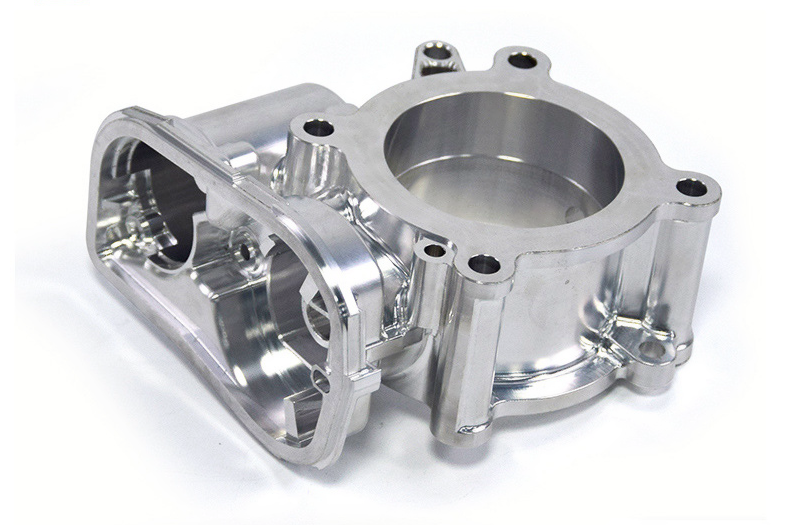Driving Innovation: The Essential Role of CNC Machining in Automotive Manufacturing
Introduction
CNC machining has significantly advanced automotive manufacturing, enabling the production of highly precise and consistent parts essential for vehicle safety and performance. It empowers automotive engineers to execute intricate and customized designs quickly and efficiently, keeping pace with evolving market demands.
Automotive companies use advanced CNC machining manufacturing capabilities to enhance production accuracy and efficiency. This leads to improved vehicle reliability, performance, and safety, solidifying CNC machining as indispensable for ongoing innovation within the automotive sector.
CNC Machining Steps
Design & Prototyping: Detailed 3D CAD modeling and engineering analysis for automotive parts.
Material Selection: Choosing materials that deliver the required performance and safety characteristics.
Precision Machining: Using advanced CNC machinery to manufacture precise automotive components.
Quality Assurance: Thorough inspection and testing to validate part integrity and tolerances.
Materials: Material Solutions for Automotive Industry
Proper material selection is crucial for automotive CNC machining. Here are key automotive materials, their properties, advantages, and applications:
Material | Properties | Advantages | Applications |
|---|---|---|---|
Tensile Strength: 310-700 MPa Yield Strength: 280-500 MPa Density: 2.7 g/cm³ Fatigue Strength: 150-300 MPa | Lightweight, high machinability, excellent thermal conductivity, corrosion-resistant | Engine blocks, transmission housings, chassis components | |
Tensile Strength: 400-700 MPa Yield Strength: 250-500 MPa Density: 7.85 g/cm³ Hardness: 120-250 HB | Excellent durability, cost-effective, suitable for heat treatment processes, high strength | Suspension systems, drive shafts, structural frames | |
Tensile Strength: 500-1,500 MPa Yield Strength: 250-1,200 MPa Hardness: 150-350 HB Excellent corrosion resistance | Durable, resistant to corrosion and thermal stresses, maintains aesthetic and structural integrity | Exhaust systems, fuel injection systems, safety components | |
Tensile Strength: 900-1,200 MPa Yield Strength: 800-1,000 MPa Density: 4.43 g/cm³ Excellent corrosion resistance | Outstanding strength-to-weight ratio, corrosion resistance, high-temperature tolerance | Engine valves, turbocharger components, high-performance suspensions |
Surface Treatment: Enhancing Automotive Component Durability
Anodizing
Functions: Anodizing protects aluminum components by forming a robust oxide layer, enhancing corrosion and abrasion resistance.
Key Features: Surface hardness up to 400 HV, enhanced aesthetic appeal, resistance to environmental corrosion.
Applications and Scenarios: Automotive wheels, suspension parts, decorative interior trim components.
Powder Coating
Functions: Powder Coating offers superior corrosion protection and durability through a uniform protective coating.
Key Features: Durable finish with thickness typically 50-120 µm, high resistance to chemicals and UV exposure.
Applications and Scenarios: Chassis parts, brake calipers, exterior automotive components.
Heat Treatment
Functions: Heat Treatment improves the mechanical properties of automotive steel components by controlled heating and cooling processes.
Key Features: Significantly increased hardness up to 60 HRC, improved tensile strength and fatigue resistance.
Applications and Scenarios: Gears, drive shafts, crankshafts, transmission components.
Electropolishing
Functions: Electropolishing refines automotive stainless steel surfaces, removing imperfections to enhance corrosion resistance and appearance.
Key Features: Exceptional surface finish (up to 0.1 µm roughness), improved corrosion resistance.
Applications and Scenarios: Exhaust system components, fuel injectors, precision engine parts.
CNC Machining Process Comparison
Each CNC machining process brings unique strengths and is applicable in specific automotive manufacturing scenarios:
Process | Key Features | Application Scenarios |
|---|---|---|
Precision: ±0.0025 mm Cutting Speeds: 50-150 m/min (metals) Complex shapes with multiple-axis capability | Complex geometries, engine casings, gearbox housings | |
Precision: ±0.0025 mm Cutting Speeds: 100-200 m/min Rotational machining accuracy | Cylindrical parts like shafts, axles, valve bodies | |
Precision: ±0.0025 mm hole accuracy Deep drilling capability (30x diameter) | Engine components, braking systems, structural frames requiring precise hole positioning | |
Surface finish: as fine as 0.1 µm High dimensional precision and accuracy | Bearings, camshafts, transmission components requiring ultra-smooth surfaces | |
Precision: ±0.0025 mm for complex surfaces Flexible multi-directional cutting | Complex precision parts, turbocharger blades, high-performance automotive components |
Considerations in Production
Thermal Deformation: Implementing temperature-controlled machining and selecting thermally stable materials to prevent component distortion.
Tolerance Control: Routine calibration of CNC equipment ensures consistently tight tolerances.
Tool Wear Management: Regularly monitoring tool conditions and selecting optimal cutting parameters and tools.
Surface Imperfections: Implementing post-processing such as polishing and coating treatments to maintain surface integrity.
Industry and Applications
CNC machining is crucial across automotive manufacturing sectors:
Automotive: Engine components, chassis, suspension systems, and precision drivetrain components.
Power Generation: Turbochargers, alternators, and electric vehicle motor components.
Robotics & Automation: Automated manufacturing equipment and robotics for automotive assembly lines.
Consumer Products: Automotive accessories, custom parts, decorative elements.
Industrial Equipment: Precision automotive tooling, molds, and specialized production equipment.
FAQs
What role does CNC machining play in automotive component manufacturing?
Which automotive materials are commonly used in CNC machining processes?
How does CNC machining enhance automotive component quality?
What surface treatments are typically applied to CNC-machined automotive parts?
How does multi-axis CNC machining benefit automotive manufacturing?

